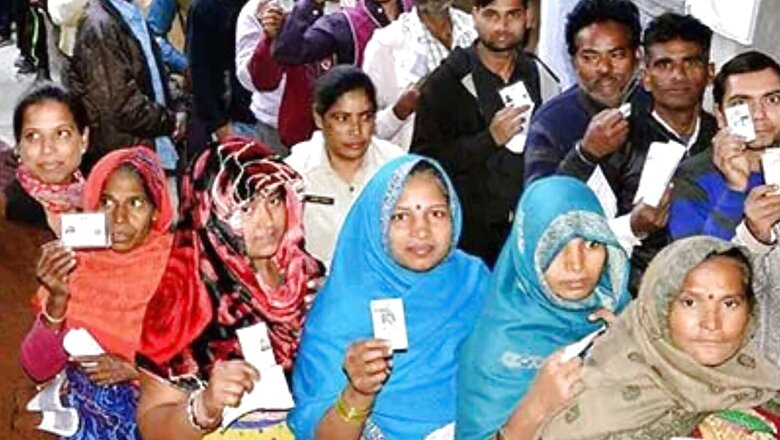
views
Not only has BJP managed to make inroads amongst OBC voters but has now become far more popular amongst them, as evidences from CSDS-Lokniti surveys suggest. What surprises many is why the government seems reluctant in holding a caste-based census? This reluctance brought 11 political parties from Bihar on one platform demanding a caste-based census this year from Prime Minister Narendra Modi. It is important to note that the delegation included even the Bihar BJP leadership. The question, which is being asked is why regional parties across states seem united in their demand for the census, and why BJP seems reluctant even though it has been able to mobilise the OBC voters towards its fold in the recent years?
The answer is straightforward. The regional parties, which have a core support base amongst the OBC voters, and have been quite popular for the first decades during the post-Mandal era, are hoping to get a new lease of life by championing the cause of the OBC welfare. Though BJP has been able to mobilise the OBC votes during last few years but it is still not confident of retaining its popularity amongst them. There is a fear that the OBC support of BJP can slip away if regional parties begin an aggressive mobilisation of the community in the name of social justice, commencing Mandal II.
Regional parties such as Rashtriya Janata Dal (RJD) and Janata Dal-United (JD-U) in Bihar and Samajwadi Party (SP) in Uttar Pradesh championed the cause of OBC and managed to draw massive support from the OBC voters in early till late 1990s. In fact, OBC voters formed the core support of a large number of regional parties. The post-Mandal politics witnessed marginalisation of Congress as it lost some of its OBC support base. As OBC voters are in a very large numbers, and they remain polarised towards the regional parties, the BJP struggled hard to make its electoral presence in national politics. The saffron party needed many years to counter the Mandal politics of early 1990s by its Hindutva politics popularly referred as ‘Kamandal politics’ in late 1990s.
The BJP under the leadership of LK Advani and Atal Bihari Vajpayee won the 1998 and 1999 Lok Sabha elections and formed the coalition government along with some alliance partners referred as the National Democratic Alliance (NDA government. Though BJP formed the NDA government but regional parties remained quite strong, polled 35.5% and 33.9% votes respectively during the 1998 and 1999 Lok Sabha elections. Even when the Congress-led UPA formed the government in 2004 and 2009, the regional parties remained popular, together polled 39.3% and 37.3% votes. It is important to note that even when BJP managed to win a majority of its own during the 2014 Lok Sabha elections with 31% votes, regional parties together polled 39% votes.
It is only during the 2019 Lok Sabha Elections that BJP made massive inroads amongst the OBC voters, making a dent in the core support of the regional parties. During the 2009 Lok Sabha Elections, 22% OBC voted for the BJP while 42% voted for the regional parties. But within a decade, support base of the BJP amongst the OBC seems to have changed dramatically, during the 2019 elections 44% OBC voted for the BJP while only 27% voted for the regional parties—clearly showed BJP’s increased popularity amongst the OBC voters.
The catch, however, is that the BJP was quite successful in mobilising the lower OBC much more than the dominant ones in many states in north India. The regional parties remained more popular amongst the upper OBC compared to the lower ones. The Yadavs of Uttar Pradesh and Bihar, the dominant OBC cast votes for SP and RJD in large numbers while BJP has been able to successfully mobilise the lower OBC castes in these states. Also, the BJP is the popular choice of the OBC voters mainly during the Lok Sabha elections but not when it comes to electing the state government. A significant number of OBCs voted for RJD during the 2020 assembly elections compared to the 2019 Lok Sabha polls. Similarly, in UP, only 14% OBC voted for SP in the 2019 General Elections but that number shot up to 29% in the 2017 assembly polls, but the party still lost the battle. We find similar differences in voting preferences amongst the OBCs for the Lok Sabha and state assembly elections in several other states.
I think, the reason why BJP seems reluctant for the caste census is due to the fear that it is successfully completed it might give a new issue to the regional parties to mount pressure on the ruling party for reshaping the quota of OBC in central government jobs and educational institutions as in all likelihood the number of OBC would be much larger than their percentage of quota in the Central government jobs. It might result in a situation of Mandal II, giving an agenda to many regional parties, which otherwise are struggling to find a positive agenda to challenge BJP. There seems to be fear that the figures for OBC might open up a Pandora box which may be extremely difficult to handle.
(The views expressed in this article are those of the author and do not represent the stand of this publication.)
Read all the Latest News, Breaking News and Assembly Elections Live Updates here.




















Comments
0 comment